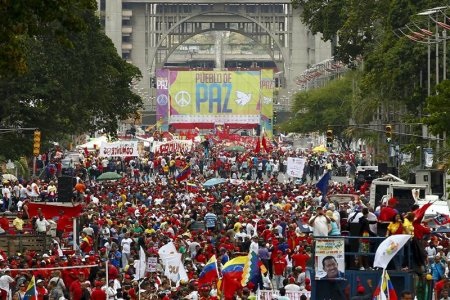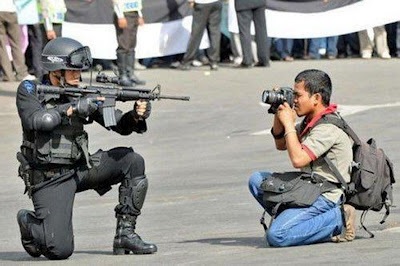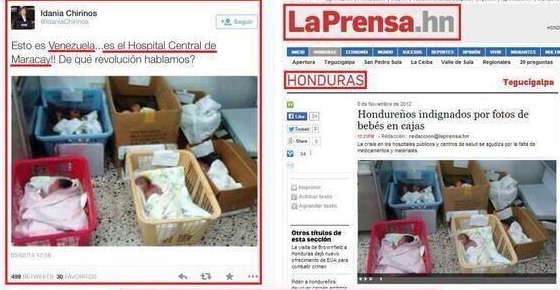Constructing the Deception of the Anti-Government “Protests” in Venezuela: A Photo Gallery

The polarized politics of Venezuela are again in the news as demonstrations by pro- (see the first photograph below) and anti-government forces are taking place, with, at this point, four deaths: a government supporter; an opposition demonstrator; a police officer; and one of uncertain provenance.
But the foreign press is portraying these as evidence of bloody government repression.
Not to go over old ground, at least too much, but this manufactured crisis is a re-run. Anyone remember the massive demo/counter-demo at the Miraflores palace in 2002, the lead-up to a short-lived coup against Hugo Chávez?
[T]here were 19 fatalities that day. Seven of the dead had participated in the pro-Chávez demonstration, seven in the anti-Chávez demonstration, and five were non-partisan bystanders. Also, there were a total of 69 wounded that day. 38 in the pro-Chávez demonstration, 17 in the opposition demonstration, and 14 were reporters or unaffiliated passers-by.
That was all blamed on Chávez at the time, by the opposition and by much of the international press. Supposedly he ordered the military, and unidentified pro-Chávez thugs, to fire into the crowds of opposition demonstrators. As with the current unrest, it seems that the government side had remarkably poor aim.
There is no flabby pretense of “objectivity” on the part of the international media when it comes to Venezuela. That country poses a stark threat to the hegemonic order, characterized these days by tame Latin American states, emerging from US-backed military dictatorships, now gamely accepting neoliberal economic policies like good little boys and girls. Having enough oil wealth to say No to all that, Venezuela created its own counter-hegemonic partnership, ALBA-TCP. And domestically, while all we hear about is toilet-paper shortages and inflation, there has been substantial progress on a number of fronts for years now—a sharp reduction of dire poverty, major advances in education, reduced child mortality, and rapid steps taken towards gender equality, maternal health, and environmental protection.
You won’t read much about that in the mainstream foreign media.
Instead, we’ll hear about opposition grievances of all kinds, and we’ll get photographs, too, circulated on Twitter and sometimes picked up by big news outlets like CNN. Here are some brutal cops, with nice woolly caps and fur collars to guard against the 24°C Caracas weather, I assume.
And visiting police officers from Bulgaria:
And a casualty:
But the victim here was a pro-Chavez demonstrator: and the picture was taken last year.
Here’s a re-purposed photo actually taken in Argentina:
And here’s a photo from Chile:
Here’s an unfortunate fellow, shot in April and then again in the exact-same way during the current protests:
This one is so iconic! But CNN had to admit that the graphic photo was actually taken in Singapore:
Here’s one from Greece:
And here’s an absolutely shameless steal from Egypt: this photo became known world-wide during the Arab Spring:
Here’s a heart-wrenching picture of babies in laundry-baskets, with the question, What kind of revolution is this? The photo is from Honduras:
Here’s my personal fave: a religious procession, reincarnated as an anti-government protest:
The social media that make this stuff go viral, and even attract mainstream media like CNN, are also the means by which fakers are quickly unmasked. Readers are invited to contribute more links to this international cavalcade of anti-government protest and government brutality in the make-believe land called “Venezuela.”













